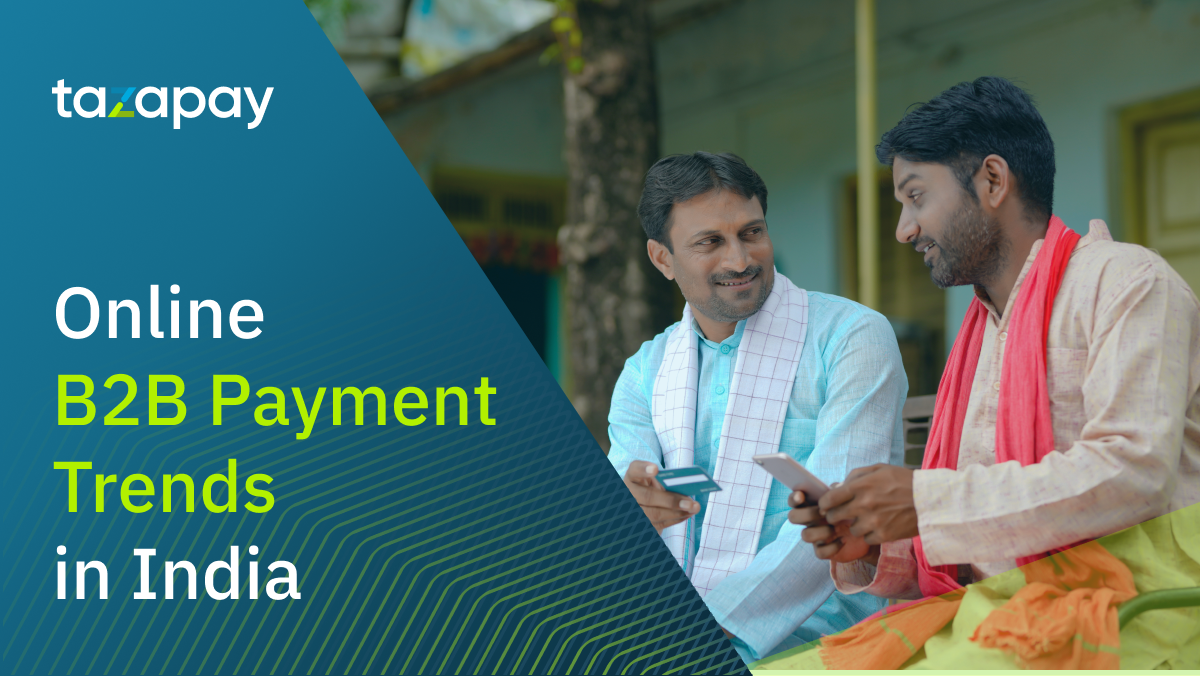- Home
Blog Blog
Insights & Trends Insights & Trends
The Online B2B Payment Landscape in India for 2022
The Online B2B Payment Landscape in India for 2022

What can anyone presently venturing into India’s B2B e-commerce market expect? Based on a 2019 report by management consulting firm RedSeer, India’s B2B e-commerce market is expected to outgrow B2C e-commerce with a compound annual growth rate (or CAGR) of 80%. By 2025, it is expected to reach USD60 billion.1
With B2B markets thriving (thanks in part to COVID-19 which disrupted the traditional supply chains), these are exciting times to evaluate B2B payment gateways that can support your online business’s plan for expansion into the region.
Omoney is an international payment platform that provides checkout, escrow, and treasury services at low platform fees and the best FX rates. Contact us to find out how we can help you:
According to a news article in Business Wire, the Indian Payment Gateway Market is expected to register a CAGR of 15% over the forecast period 2020 to 2025.2
As more payment gateways start to provide innovative features and competitive platform prices, there’s no better time to enter India’s e-commerce landscape while looking for a payment platform to partner with.
India’s Digital Payment Trends in a Nutshell
With increasing internet penetration and awareness about the ease of online transactions, consumers are changing their preferences to making payments online. Thus, the current top payment methods in India for online e-commerce transactions are as such:
- Cards
- Digital Wallets
- Bank Transfer
As for the trends to look for in the upcoming years, these are the insights we’ve gathered from our research:
- Ensure Payment Gateways Include UPI as a Payment Method and Stays Up-to-Date with New Product Features
- Don’t Overlook Card Payments as Card Operators Develop New Penetration Strategies
- Stay on Top of Legislative Changes as RBI Clamps Down on Fraudulent Transactions
How are Online E-Commerce Payments Done in India Presently?
The online payment habits of Indian consumers mirror those of the Singaporean consumer closely. These are the top 3 payment methods in India's online landscape at present:
Cards
Accounting for 32% of all payments digitally in India for the year of 2020 according to Statista, cards are the predominant payment method at present.3
While commercial cards differ from regular credit and debit cards in that the accounts tied to them are businesses instead of individuals, these cards are gradually gaining traction in B2B payments especially where timely automated payouts are needed. These include the likes of salary payouts and employee claims.4
However, adoption of commercial cards among B2B companies tends to lag due to high platform fees associated with them. With that said, the popularity of cards in online transactions still means that having this as a payment option is key to a smooth B2B checkout. On top of that, card operators are adopting solutions that will address these issues as discussed in the next section.
In India’s domestic market, HDFC Bank’s takes the lion’s share in credit card penetration at 23.61%, followed by SBI Card at 19.17% and ICICI Bank at 17.57% in 2021.5 For debit cards, RuPay is the leading card issuer at 60% of the market share as of late 2020.6
Digital Wallets
For a nation that saw an increase of 47 million internet users from 2020 to 2021, it’s no surprise that digital wallets, or e-wallets, are gaining traction as the 2nd most popular payment method for online transactions in India.
Forming 26% of all online transactions in 2020 according to Statista, digital wallets are rising in adoption in conjunction with rising smartphone penetration. Even though over two-thirds of the Indian population doesn’t own a smartphone, it is one of the fastest growing smartphone markets in the world.
Since most e-wallets have a mobile app associated with it, this would also mean that digital wallets would eventually gain the lion’s share of online transactions.
The most predominant player in the digital wallet space is the Unified Payments Interface (UPI), a payment system developed by the National Payments Corporation of India (NPCI), to enable real-time transfers between bank accounts as opposed to collecting and holding money in a separate digital account.
Bank Transfer
Bank transfers are less popular to pay for online transactions among India consumers, accounting for 18% of online transactions in 2020, only 1% above paying via cash according to Statista.
Bank transfer is also expected to decline in share by 2023 according to JP Morgan’s report to just 17% from their 2019 share of 19%.7 However, should Indian banks start to adopt digital means of conducting bank transfers in conjunction with the government’s encouragement of digital payments, bank transfers may still stand as a viable payment method in the online e-commerce space.
Offer these local payment methods and more across 56 major markets when you connect your online platform with Omoney. Find out how:
Digital Payment Trends to Look out for in India 2022
Ensure your Payment Gateway Includes UPI as a Payment Method and Take Advantage of New Product Features
According to the National Payments Corporation of India (NPCI), Unified Payments Interface (UPI) transactions will see increased usage in a post-COVID economy, especially the 'phygital' world which combines the physical and digital space.
Since its launch in 2016, UPI has grown exponentially at a CAGR of 414%, clocking an all time high of 1,800 million transactions in September 2020.9 This adoption was also compounded by the fact that the government had mandated a zero Merchant Discount Rate (MDR) for all domestic UPI transactions, though this subsidy has since been removed in the 1st of January 2020.
On top of that, UPI 2.0 was launched in 2018 with the aim of expanding UPI with more use cases. For instance, invoice verification, linking of overdraft accounts, additional security through signed intent and QR codes are some of the features introduced in this update.9 These new features can be a game changer in terms of UPI payment adoption and growth in India and your business would be remiss if UPI was not integrated as a payment method in your B2B checkout.
Thus, if your payment platform is able to integrate with UPI and keep up with UPI’s payment features, your online B2B platform stands to gain in having a more seamless payment experience.
Don’t Overlook Card Payments as Card Operators Develop New Strategies to Compete Locally
Many sources have forecasted that card payments will be overtaken by digital wallets, especially since UPI are offering more features that eases the digital payment process. For instance, JP Morgan predicts that cards will be overtaken by digital wallets as the preferred payment method in 2023, where digital wallets will take up 38% of market share while cards would hold 32% of the market share.
However, this doesn’t mean that you should neglect cards as a payment method either. Global card operators like Visa and Mastercard are planning to integrate with near-field communication (NFC) technology in order to encourage card adoption so that they don’t lose their slice of the pie.10
NFCs are a proximity-based wireless communication standard, and data is transmitted from a tag to an NFC reader via inductive coupling similar to radio frequency identification (RFID). With the latest smartphones having introduced NFC chips into their devices, cards can still be used as a checkout payment method via mobile payment apps like Apple Pay or Google Pay. Users only need to bring their smartphone close to the POS terminal in order to make their payments if they’re shopping physically, while the mobile app can be used to make online payments after a one time authorization. Hence, the transition from having to present a physical card to a smartphone is a seamless one.
Through this highly adopted technology, card operators can then allow merchants to accept digital payments when buyers pay through their smartphones. For example, Mastercard has formed a partnership with Axis Bank Ltd (who ranks 4th in terms of credit card market share in India as of 2021) and Worldline, a payment service provider, to launch its Soft Point of System (POS) payment solution in an effort to allow small merchants to accept card payments via NFC technology.
With this in mind, it is unlikely that cards will be replaced by digital wallets anytime soon. If your payment platform has cards enabled as a payment method, then you won’t lose out to clients who prefer to pay for their goods and services using cards.
Ensure your Payment Gateway is Up-to-Date with Legislations as Authorities Introduce Regulations to Reduce Loss to Fraud
With the shift towards online transactions for all forms of payment, the Reserve Bank of India (RBI) is clamping down on fraudulent payments in order to reduce lost value to unscrupulous actors.
In India, the highest value lost to fraudulent transactions is from counterfeit cards, and cards stolen and lost. The new regulations in place mean banks have to provide an option to set daily limits to card spending for cash withdrawals, POS payments, and online payments. Customers also have the option to block international transactions, which on one hand, will help to reduce fraudulent transactions, but on the other hand, presents potential frictions for international businesses expanding into the Indian market.
To prevent any blockages from happening, it helps to be communicative to your customers about your financial details so that they don’t accidentally block transactions tied to your business. For platforms that have low-touch interactions with their customers like online marketplaces and SaaS platforms, it helps to have a virtual account associated with your name so that your buyers know that the transaction is coming from your entity instead of your payment provider’s entity to avoid confusion as well.
Not only that, check if your payment platform is up to date and localised with India’s payment legislations to ensure that your transactions are processed smoothly and not potentially flagged as a false positive. In turn, this may also mean working with the payment provider closely to provide the necessary documentation for their KYB/KYC processes in order to ensure smooth payment operations.
The dynamic payments landscape in India is something that may intimidate any online business trying to enter the region. By partnering with a payment platform that is on top of the changes in the payments ecosystem, you’ll be able to take the burden of keeping up to date with the payments landscape off your shoulders so that you can focus on what your business does best.
Omoney is able to do all this and more, with localised payment methods to ensure that you capture potential clients who are sticky in their purchasing habits. We’re also able to replicate this payment localisation across 56+ countries, covering over 173 markets worldwide.
Speak with us today to find out more about our payment solutions.
Sources:
- Times of India: Purchase Credit: The missing link of the fragmented digital B2B payment cycle
- Business Wire: India Payment Gateway Market 2020-2025
- Statista: Distribution of payment methods for online transactions in India as of January 2020
- Inc42: Driving the B2B Payments Growth in India in 2019
- CNBC: Credit Cards in India
- RBI: Payment Systems in India 2010-2020
- JP Morgan: India’s Payment Landscape 2020-2021
- Trak.in: UPI will soon cross 1 Trillion Transactions
- Live Mint: UPI 2.0 Launched: Here are its Key Features
- Euromonitor: Financial Cards & Payments in India
Category

Insights & Trends
The Online B2B Payment Landscape in India for 2022
Related Articles

The Online B2B Payment Landscape in India for 2022

Online B2B Payment Trends in Singapore 2022






